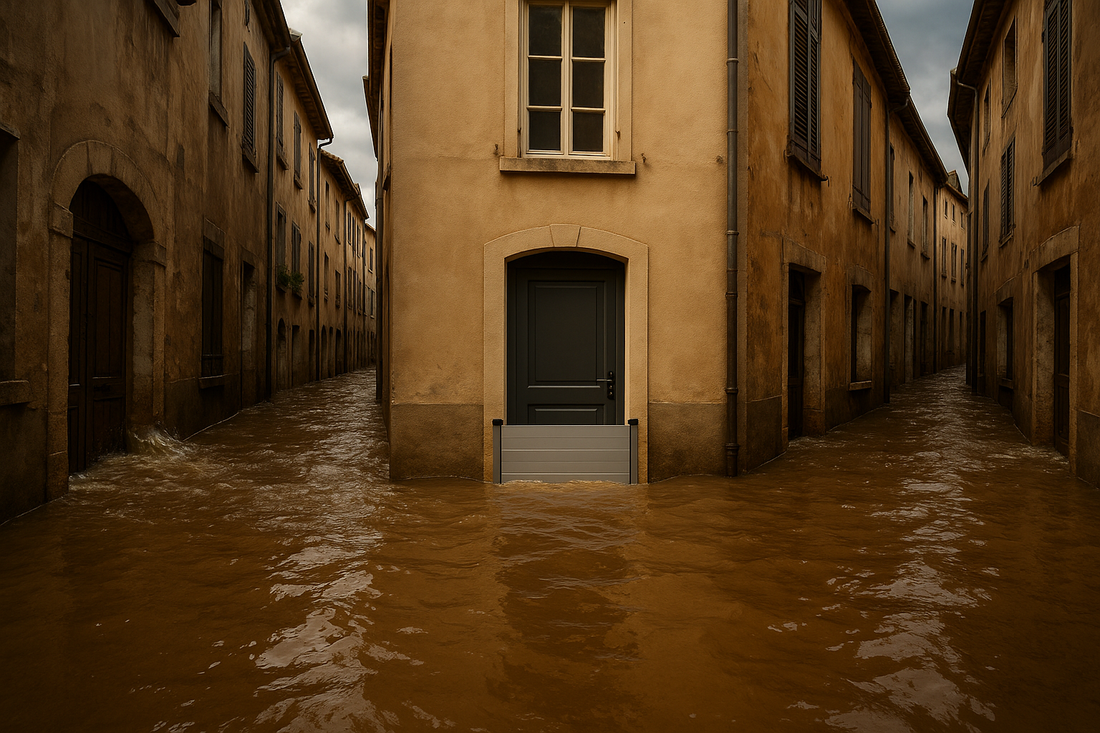
5 Essential Tips for Peace of Mind Against Bad Weather
If, like me, you get that sinking feeling when the rain starts pouring, you're not alone. I know that feeling all too well. It takes me back to a distinct memory: a jog in the rain where I was soaked through my waterproof coat, my eyes stinging from the downpour. For days, the rain didn't cease. Then, one afternoon, my mum, then my dad, the my sister, then her husband, and their two kids all showed up at my door one, after the other with nothing but the clothes on their backs. The chaos and heartbreak that followed will be forever etched in our memories.
In English, we have a common mantra of "keep calm, carry on." This is the ethos that inspired this article and our brand promise: Lightweight, easy-install, off-the-shelf flood protection. Thoughtful innovation from our family to yours.
1. Read the Room & Be Prepared
The knee-jerk reaction after a disaster is often an innate "flight" response—to escape. However, for most people, this just isn't feasible. The first tip for serenity comes down to staying alert. If my family had even had 20 minutes warning of the flood, the emotional toll would have been significantly less.
In retrospect, there were many warnings we didn't take seriously enough:
- Many days of extreme weather
- Visible signs that the river was reaching its capacity
- School closures due to meteorological warnings
You can always plan for the worst and hope for the best. Be prepared to move your important belongings to higher ground and make a quick exit. This proactive approach is key to feeling secure.
2. Hedge Your Bets with Smart Protection
Most floodwaters in homes don't exceed 60 cm. This is the reason behind how we carefully selected the standard height of our flood barriers. As such, your most effective strategy is to focus on blocking any entrances below 60 cm—essentially meaning doors. The right barrier can be a smart solution, helping you combat the first level of risk effectively.
3. Leverage Your Existing Assets
If, like us, you have a brick home, you may be surprised to hear that you already have some great (temporary) flood protection. Bricks can withstand water leakage for short periods, which means a significant proportion of your house is already insulated. Therefore, you only need to focus on plugging the gaps. Our flood barriers are thought-out to work with your existing structures.
4. Time Is of the Essence
If our approach is to always be prepared for the worst, this means we need flood defences that are simple and easy-install so that even if we put them up multiple times a year, it's not a big effort. The forces at work against a flood barrier during a flood are actually quite small, as they are well balanced by the water itself. Therefore, you don't need something heavy—you need a lightweight barrier that fits snugly within your door frames. Our passion at WaterHalt is to commoditise flood defences. You shouldn't need to speak to an advisor for a quote, you shouldn't need to find a handyman to come and install it. This is our innovative approach: a solution that is off-the-shelf and intuitive to use yourself.
5. Learn From Japan
Every country has its own geographical traits to which its population must adapt. As we mentioned earlier, you cannot run away; you need to face these things head-on. Japan is a great illustration of a country that fully embraces its meteorological setbacks from earthquakes. The main lesson is that they all know exactly what to do if an earthquake hits. It's a simple plan, ingrained in them from an early age. This is a lesson in care.
For us, the step is simple: agree on a clear plan for what to do in a flood and take the time to ingest it. Have a yearly drill—try to make it fun. If the worst does happen, you don't have to think, and you know that the actions you take will position you for the best outcome. This brings true serenity and makes you feel safe.
Takeaways
So how do I address my own peace of mind during bad weather? It boils down to 5 key takeaways:
Read the signs and prepare for the worst.
- Have good quality, impactful flood protection for the first 60 cm of entry points (check out our selection of products!).
- Leverage existing materials as assets—bricks already protect you from floods (up to a certain point).
- Find flood protection solutions that you can erect quickly and easily with minimal effort. It's not about heaviness/force; it's about the eradication of gaps. This is a thoughtful solution.
- Have a clear evacuation plan and refresh it regularly. This care for your family will provide a sense of serenity.
Enjoyed this article? Sign up below for our newsletter for regular flood prevention tips and take a look at our lightweight, easy-install flood barriers, which are off-the-shelf. We won't disappoint!
